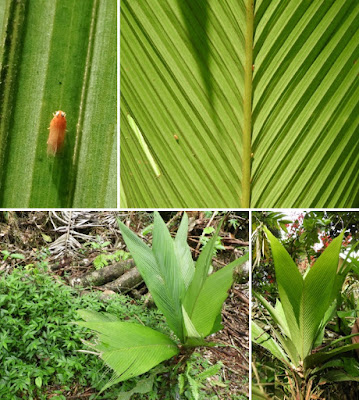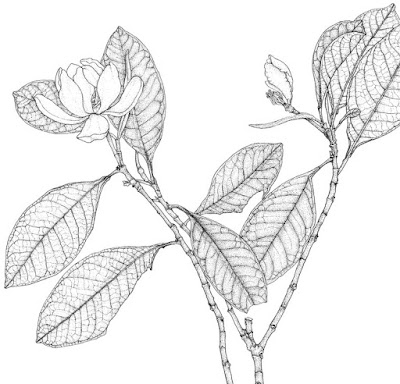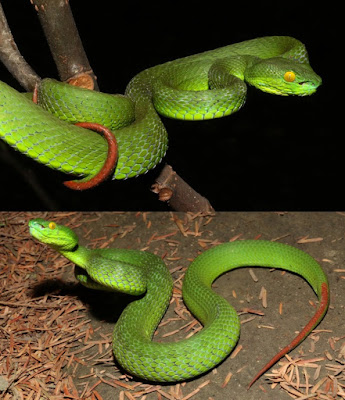[Most Recent Entries] [Calendar View]
Friday, May 1st, 2020
| Time | Event | ||||
| 6:05a | [Entomology • 2020] Haplaxius dougwalshi • A New Species of Planthopper in the Genus Haplaxius (Hemiptera: Fulgoroidea: Cixiidae) on Palms in Costa Rica
Abstract The genus Haplaxius is a large taxon of cixiid planthoppers that is of economic importance due to the ability of Haplaxius crudus to transmit lethal yellowing in coconut palms. Haplaxius dougwalshi sp. n. is established as a new taxon of Cixiidae in the tribe Oecleini collected from native palms in lowland tropical rainforest in Costa Rica. Placement in the genus Haplaxius is supported both by molecular evidence based on the COI and 18S genes as well as by morphological characters. This novel taxon was discovered during survey work in Costa Rica to look for phytoplasmas and document planthopper diversity on palms. Furthermore, Haplaxius skarphion was also collected from coconut palms during survey work and is reported for the first time in Costa Rica. Keywords: Hemiptera, Cixiidae, taxonomy, DNA barcoding, planthopper, palm, Costa Rica
Systematics Family Cixiidae Spinola 1839 Subfamily Cixiinae Spinola 1839 Tribe Oecleini Muir 1922 Type genus: Oecleus Stål 1862 Genus Haplaxius Fowler 1904 Type species: Haplaxius laevis Fowler 1904 Haplaxius dougwalshi sp. n. Diagnosis. This species is distinguished by a combination of bright orange coloration, facial color pattern of an orange frons with white arch traversing width of frons resulting in a trapezoidal shape dorsad of frontoclypeal suture, large, incurved processes on lateral margins of the pygofer and aedeagus with curved spine near midlength of shaft. Plant associations. Pata de gallo palm (Asterogyne martiana), Arecaceae. Distribution. Costa Rica (Heredia, Puerto Viejo de Sarapiqui) Etymology. The specific name given is an honorarium in reference to the lead authors professor and chair during graduate school (Ph.D.), Dr. Doug Walsh at Washington State University, who’s signature mustache resembles the color pattern observed on the frons of the novel taxon. Brian W. Bahder, Edwin A. Barrantes, Marco A. Z. Echavarria, De-fen Mou, Ericka E. Helmick & Charles R. Bartlett. 2020. A New Species of Planthopper in the Genus Haplaxius (Hemiptera: Auchenorrhyncha: Fulgoroidea: Cixiidae) on Palms in Costa Rica and A New Country Record for Haplaxius skarphion. Zootaxa. 4767(4); 543–552. DOI: 10.11646/zootaxa.4767.4.4 Resumen: Haplaxius dougwalshi sp. n. fue recolectada en palmeras nativas en el bosque lluvioso tropical en las tierras bajas de Costa Rica y se establece como un nuevo taxón de la familia Cixiidae de la tribu Oecleini. La clasificación de esta especie dentro del género Haplaxius se basa tanto en la evidencia molecular aportada por los genes COI y 18S; así como en los caracteres morfológicos de la misma. Este nuevo taxón fue descubierto durante un trabajo de investigación que se está llevando a cabo en Costa Rica, el cual tiene como objetivo principal la evaluación de la ocurrencia de fitoplasmas y la documentación de la diversidad de chicharritas en las palmeras. Palabras clave: Cixiidae, taxonomía, código de barras de AND, chicharrita, palmera, Costa Rica | ||||
| 6:32a | [Botany • 2019] Magnolia frontinoensis (Magnoliaceae) • A New Species from Cordillera Occidental, Colombia
Abstract A new species of Magnolia (Magnoliaceae), from Antioquia Province, Colombia is described. Magnolia frontinoensis, only known from a restricted area of the Western Cordillera, from 1700–1940 m, is recognized by the lamina bases decurrent and revolute, and the fruits small (11.7–29 × 8.4–21.5 mm). Besides the new species, two new records for Colombia are presented: Magnolia gloriensis, initially known to be found in Central America, from Nicaragua to Panama, it is now recorded in the Pacific region of Colombia. Also, M. venezuelensis, only known from the type collection in Venezuela [Lara region], is now recorded in the Eastern Cordillera of Colombia. With these new records, the number of Magnolia species in Colombia increases to 38. Keywords: Dugandiodendron, Panama, National Natural Park Las Orquídeas, Talauma, Venezuela Magnolia frontinoensis Cogollo, Hoyos-Gómez & Serna, sp nov. Etymology. — The specific epithet is dedicated to the municipality of Frontino (Antioquia), where this species was collected with flowers for the first time in 1987 and 25 years later, it was found with fruits. Álvaro Cogollo-Pacheco, Saúl E. Hoyos-Gómez and Marcela Serna-González. 2019. Una nueva especie y otros registros de Magnoliaceae para Colombia [A New Species and Other Records of Magnoliaceae for Colombia]. Brittonia. 71(1); 32–38. DOI: 10.1007/s12228-018-9554-0 Resumen: Se describe e ilustra una nueva especie de Magnolia (Magnoliaceae) del departamento de Antioquia, Colombia. Magnolia frontinoensis, conocida solo de un área restringida de la Cordillera Occidental, entre 1700–2000 m. Se distingue por presentar la base de la lámina foliar decurrente y revoluta, y los frutos pequeños (1.15–3 cm de largo, 0.8–2.15 cm de diámetro). Adicionalmente, se presentan dos nuevos registros para Colombia: Magnolia gloriensis, especie distribuida en Centro América, desde Nicaragua hasta Panamá, ahora registrada para la región del Pacífico colombiano y M. venezuelensis, conocida solo de la colección tipo de Venezuela [región de Lara], colectada en la Cordillera Oriental de Colombia. Con estos nuevos registros, asciende a 38 el número de especies de Magnolia para Colombia. Palabras claves: Dugandiodendron, Panamá, Parque Nacional Natural Las Orquídeas, Talauma, Venezuela | ||||
| 10:27a | [Herpetology • 2020] Trimeresurus caudornatus • A New Pit Viper of the Genus Trimeresurus (Lacépède, 1804) (Squamata: Viperidae) from Southwest China
Abstract The white-lipped tree viper, Trimeresurus albolabris Gray, is one of the most common species of the genus Trimeresurus with a wide distribution from India eastwards to China and southwards to Indonesia. However, this species was previously split into five geographical clades with significant genetic divergence. Recent surveys in Yingjiang County, Yunnan Province, China resulted in the discovery of one cryptic species of the subgenus Trimeresurus. Combining molecular, morphological and ecological data, we describe it as a new species Trimeresurus caudornatus sp. nov. The new species differs from other Trimeresurus species by a combination of the following characteristics: (1) Head and body generally dark green, postocular stripes absent in both genders, upper labials light green; (2) ventrolateral stripe faint green yellow, present on the first row of DSR in both genders; (3) iris golden yellow in both genders; (4) dorsal tail mostly dark red, lateral and ventral green; an orange red stripe along the ventral part of the tail; (5) DSR 21/22 –21–15, VEN 161–163, SC 52–72; (6) first upper labial partially fused to the nasal. The new species was shown to be a strongly supported monophyletic group (BPP 100%) and sister to T. septentrionalis. The uncorrected pairwise distances of mitochondrial gene Cytb between the new species and other species of the subgenus Trimeresurus, ranging from 0.059 (T. septentrionalis) to 0.134 (T. kanburiensis). Keywords: Reptilia, Trimeresurus caudornatus sp. nov., Viperidae, morphology, molecular phylogenetics Trimeresurus caudornatus sp. nov. Chen, Ding, Vogel & Shi, Zening Chen, Jianping Yu, Gernot Vogel, Shengchao Shi, Zhaobin Song, Yezhong Tang, Jia Yang, Li Ding and Cangsong Chen. 2020. A New Pit Viper of the Genus Trimeresurus (Lacépède, 1804) (Squamata: Viperidae) from Southwest China. Zootaxa. 4768(1); 112–128. DOI: 10.11646/zootaxa.4768.1.7 我国云南再发现竹叶青属一新种——饰尾竹叶青 |
| << Previous Day |
2020/05/01 [Calendar] |
Next Day >> |













